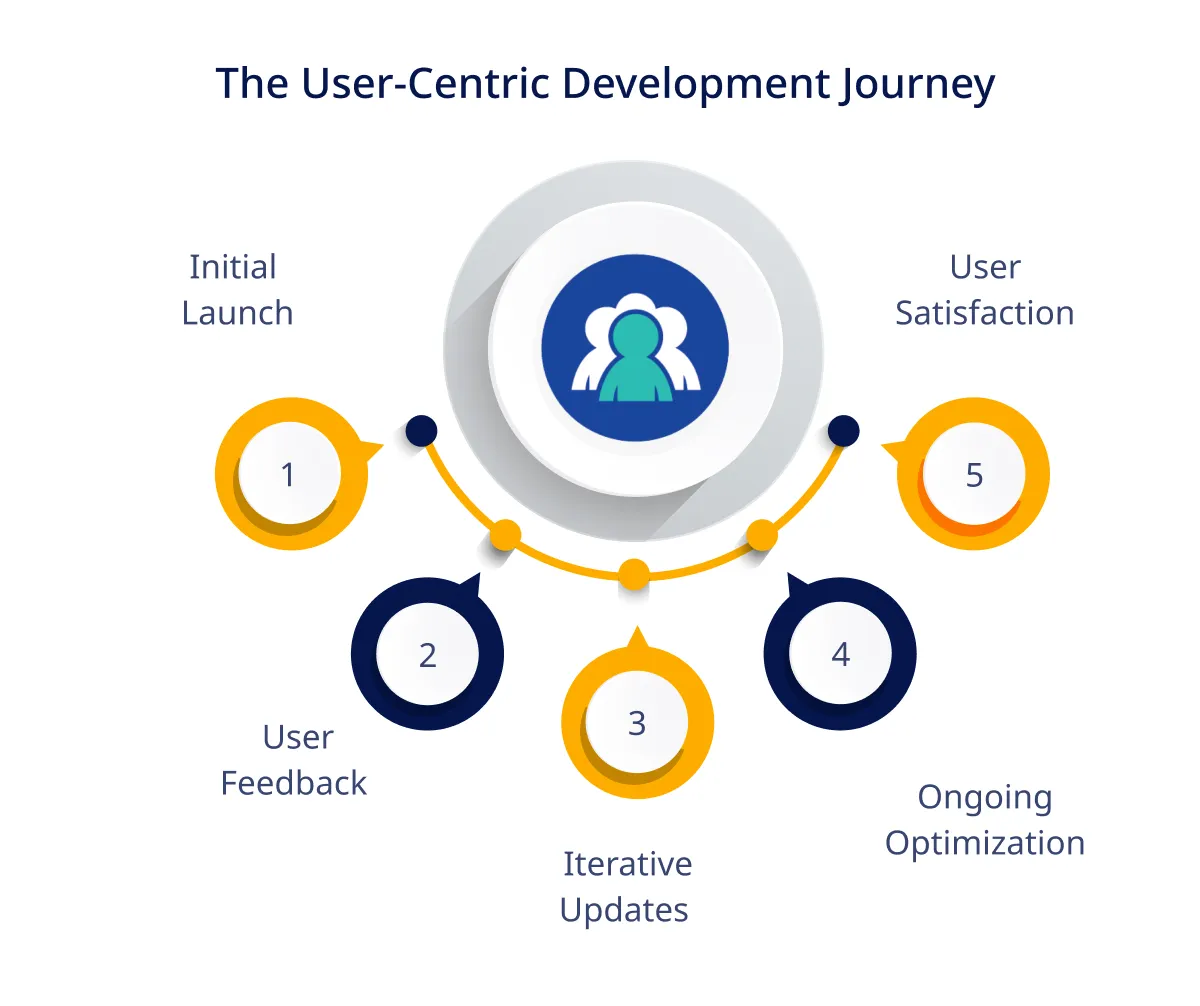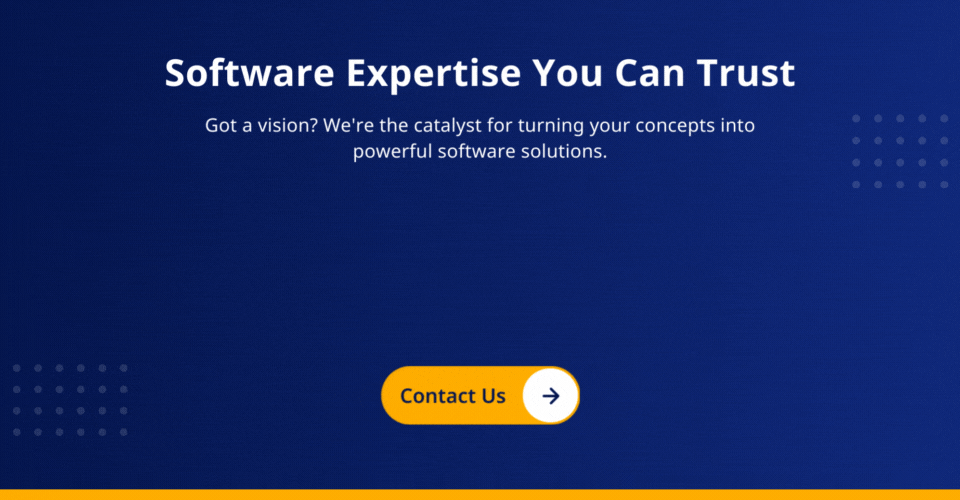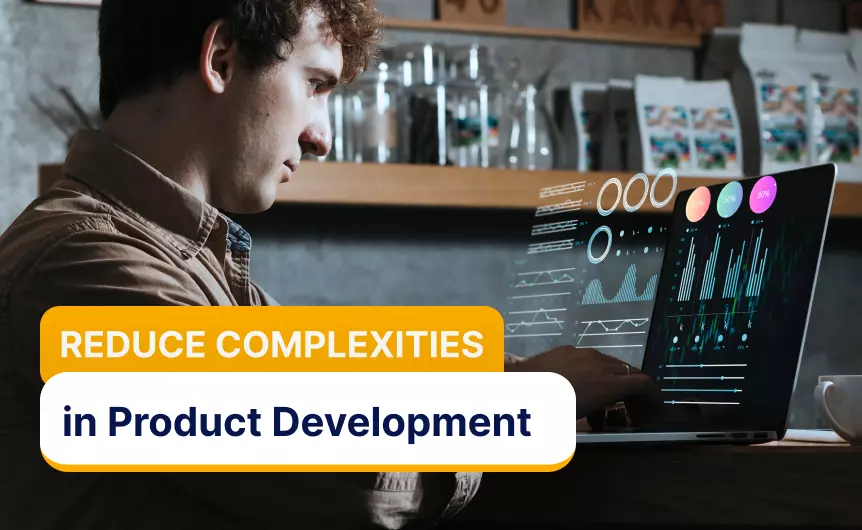What transforms an app from forgettable to indispensable? It’s not just clever features or slick interfaces.
The secret lies in understanding the deeper needs of users and designing experiences that seamlessly fit into their lives.
Yet many companies still rely on gut instinct or inward thinking when building products.
The result is solutions seeking problems that fail to resonate past initial hype. A Pragmatic Institute study found over half of the product capabilities lack vitality and are barely used.
This guide explores practices for infusing user insights throughout all stages of new product development – from ideation to design to post-launch.
We’ll share case studies revealing how top companies build empathy through immersion, prototype for feedback, and embed live metrics to keep improving.
Whether launching a new product or optimizing an existing one, applying user-driven principles maximizes value.
Research by Bain & Company found that user-centric products generate twice the revenue with half the selling cost.
Follow our tested blueprint to make your software a success by understanding users, solving real problems, and refining relentlessly based on real-world usage data.
Understanding User-Centric Development
User-centric development lies at the core of creating successful user-driven software. It’s essential to understand the significance of this user approach while building software that genuinely resonates with users.
Let’s learn more about this concept and understand it.
Why It Matters:
- Enhanced User Satisfaction: By prioritizing user needs, you create products that satisfy users, increasing user satisfaction and retention.
- Risk Mitigation: Incorporating user feedback from the outset helps identify and rectify issues early, reducing the risk of costly fixes later.
- Competitive Advantage: Companies that embrace user-centricity often gain a competitive edge by delivering solutions aligned with genuine user demands.
User-Centered vs. Product-Centered
- User-centered development revolves around comprehending user identities and requirements, serving as the compass for the entire development process.
User-centric development involves engaging potential users, comprehending their fitness objectives, and tailoring the app to aid them in reaching those goals.
- Product-centered development prioritizes features based on internal perceptions rather than user needs, leading to potentially irrelevant functionalities.
An approach that prioritizes flashy features over user needs may result in adding features that fail to contribute to users’ fitness progress.
We craft customer-centric software solutions tailored to your unique needs.
Key Practices for User-Driven Product Development
Here are some key practices that can make your software user-driven and customer-centric. Let’s break them down to help you navigate this crucial aspect of software development.
1. Agile Methodology – A Collaborative Approach
One of the popular key practices for user-driven products is Agile Methodology. It is about working closely with your dedicated team and users throughout the project. It emphasizes flexibility so you can adapt to changing user needs.
For example, think of it as sculpting a piece of clay; you refine it until it’s right.
2. Continuous User Testing – Your North Star
Regularly involve users in testing your software to catch issues early. Having a GPS for your product keeps you on the right path.
Netflix, for instance, constantly gathers user data to refine its recommendation algorithm.
3. Feedback Loops – Listen and Learn
A McKinsey research stated companies that holistically embed user data and feedback exhibit 30% faster revenue growth and 40% higher retention.
Create channels for users to provide feedback quickly. It’s like an open-door policy with your users – they can tell you what they think anytime.
Amazon’s customer reviews are a prime example of a feedback loop in action.
Also Read: Software Product Development Life Cycle
4. Iterative Development – Small Steps, Big Gains
Break your project into smaller, manageable chunks. As said, any big task begins with the small ones; focus on achieving one step at a time.
Google Maps started with basic mapping and then added layers of features over time.
5. Data-Driven Decision-Making – Let Numbers Guide You
Use data and analytics for informed decision-making. It helps you navigate the areas of improvement by depicting valuable data insights so that you can deliver user-driven software. Facebook analyzes user behavior to fine-tune its news feed algorithm.
These practices ensure your software evolves with your users’ needs and preferences.
By following these principles, you align your development process with the core principles of customer-centric software development.
Under the guidance of enterprise software development services, businesses can implement can software product development lifecycle stages successfully.
Elevate user experiences with our expert team at ValueCoders.
Now, to better understand, let’s look into some successful case studies of user-centric software product development.
These insightful cases show us real-world examples of how these principles are put to work.
1. Amazon: Revolutionizing Online Shopping
- The Challenge: Back in the day, online shopping could have been smoother than it is today. Amazon faced the challenge of making it convenient and trustworthy for users.
- The Solution: Amazon embraced customer-centricity by focusing on user feedback and data. They implemented features like user reviews, personalized recommendations, and one-click ordering.
- The Result: Amazon became the e-commerce giant we know today, setting the gold standard for user-centric shopping experiences.
2. Slack: Redefining Team Communication
- The Challenge: Team communication tools could have been more organized and efficient. Slack aimed to change that.
- The Solution: Slack’s development was centered around user needs. They created a platform that simplified communication with channels, integrations, and a user-friendly interface.
- The Result: Slack quickly gained popularity in workplaces worldwide, transforming team collaboration.
3. Airbnb: Making Travel Personal
- The Challenge: Traditional hotels dominated the travel industry. Airbnb needed to convince travelers that staying in someone else’s home could be equally safe and comfortable.
- The Solution: Airbnb puts user trust and comfort first. They introduced user profiles, verified photos, and reviews. This transparency built trust among users.
- The Result: Airbnb disrupted the travel industry, offering unique and personalized stays that catered to individual preferences.
4. Spotify: Reimagining Music Streaming
- The Challenge: Music streaming was once plagued by piracy and clunky interfaces. Spotify aimed to provide a legal and user-friendly alternative.
- The Solution: Spotify engaged with music lovers and artists, fine-tuning their service. They offered personalized playlists, collaborative playlists, and an easy-to-navigate app.
- The Result: Spotify became a global leader in music streaming, changing how we access and enjoy music.
5. Uber: Transforming Transportation
- The Challenge: Traditional taxi services often frustrate passengers with unreliable availability and payment processes. Uber aimed to reinvent the transportation experience.
- The Solution: Uber focused on user convenience and reliability. They introduced features like real-time ride tracking, cashless payments, and user ratings for drivers.
- The Result: Uber revolutionized the transportation industry by providing a convenient, affordable, and user-centric alternative to traditional taxis.
6. Netflix: Redefining Entertainment
- The Challenge: Traditional TV networks had limited options, rigid schedules, and ads. Netflix sought to give viewers more control and choice.
- The Solution: Netflix embraced personalization. They offered an extensive library of on-demand content and used algorithms to recommend shows and movies based on user preferences.
- The Result: Netflix became the dominant player in the streaming industry, setting the standard for personalized entertainment experiences.
Also Read: Navigating the Stages of Software Product Development
Key Takeaways from Case Studies
Here are some key takeaways from the case studies we’ve mentioned previously.
Whether your business offers or seeks product UI/UX design services, these points can help you avoid the common mistakes of user-driven software product development.
1. Listen to Users: All these companies actively listened to their users, gathering feedback and adapting their services accordingly.
2. Continuous Improvement: They continued after the initial launch. Instead, they continuously improved their products based on user needs and changing technology.
3. Transparency and Trust: Trust is paramount. Airbnb and Amazon built trust through transparency in user profiles and reviews.
4. Simplicity Matters: Slack and Spotify simplified complex tasks, making them accessible to a broad audience.
5. Convenience Wins: Uber and Netflix made life more convenient for users by simplifying transportation and entertainment options.
6. Personalization Matters: Both companies used personalization to provide tailored experiences, making users feel valued.
7. User Ratings: Uber and Netflix used user ratings to maintain quality and build trust within their platforms.
Discover Agile methodologies with ValueCoders
Applying the Lessons
Here are some ways to implement these project-savior points in your business.
1. User Feedback is Gold: Actively seek feedback from your users at every stage of development. Their insights can be your North Star.
2. Stay Agile: Be flexible and ready to adapt. The software world evolves rapidly, and so should your product. There are plenty of software development services companies in India offering quality IT services at an affordable price to help startups.
3. Build Trust: If users trust your product, they will likely stick around. Transparency and user-generated content (like reviews) can help.
4. Keep It Simple: Complexity can be a barrier. Simplify wherever possible to make your software accessible and user-friendly.
By keeping these principles in mind and drawing inspiration from these case studies, you can set your user-driven software on the path to success.
Consider having software product development services that can handle your user-driven project without errors.
Remember, it’s not just about building software; it’s about building software that users love and can’t imagine living without. Happy developing!
Conclusion
Software sustenance is based on meeting real human needs. Without continuous user insights steering the course, products drift aimlessly or only solve imaginary problems.
But companies willing to immerse themselves in customer journeys, prototype relentlessly, and optimize based on usage metrics reap rich rewards.
Talking to real people helps improve the product by focusing on what’s useful instead of flashy.
Of course, there is no “set it and forget it” formula. User-centric thinking must permeate processes and culture continually.
As markets change and new insights emerge, products must adapt or risk irrelevance.
ValueCoders, one of the leading one of the leading software development companies in India, has been empowering brands for years, helping them keep up with the latest tools and technology.
The consumer software space exemplifies this idea – by constantly A/B testing and monitoring engagement, leading back-and-forth around user behaviors. This fluid, responsive approach sets the standard.
Great software is a conversation – a back-and-forth between users and creators across the product’s lifespan. Listening attentively, interpreting needs thoughtfully, and responding empathetically. This crafts solutions that feel indispensable.
Are you ready to start a conversation that spearheads success? Let user wisdom guide you forward.











